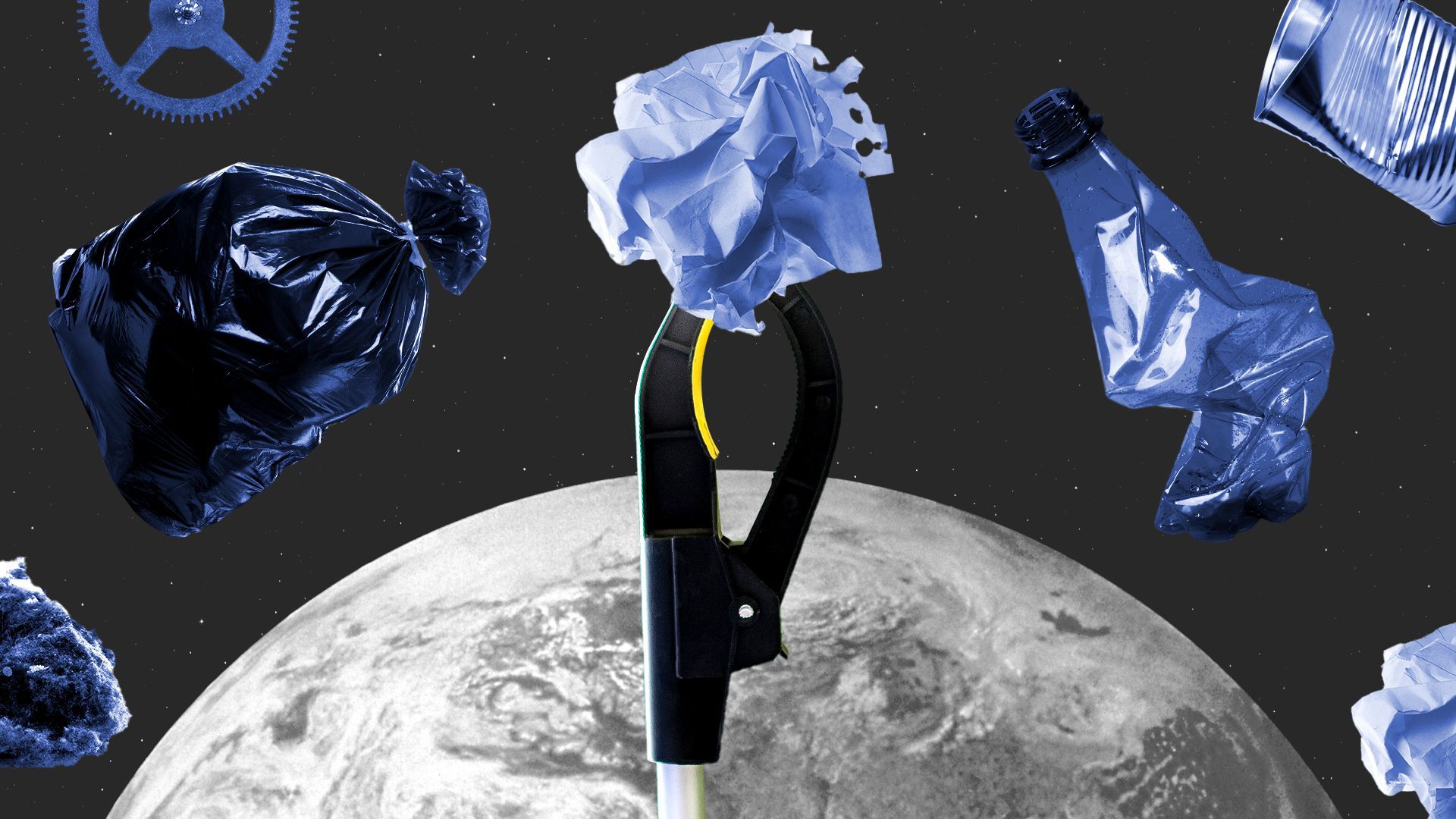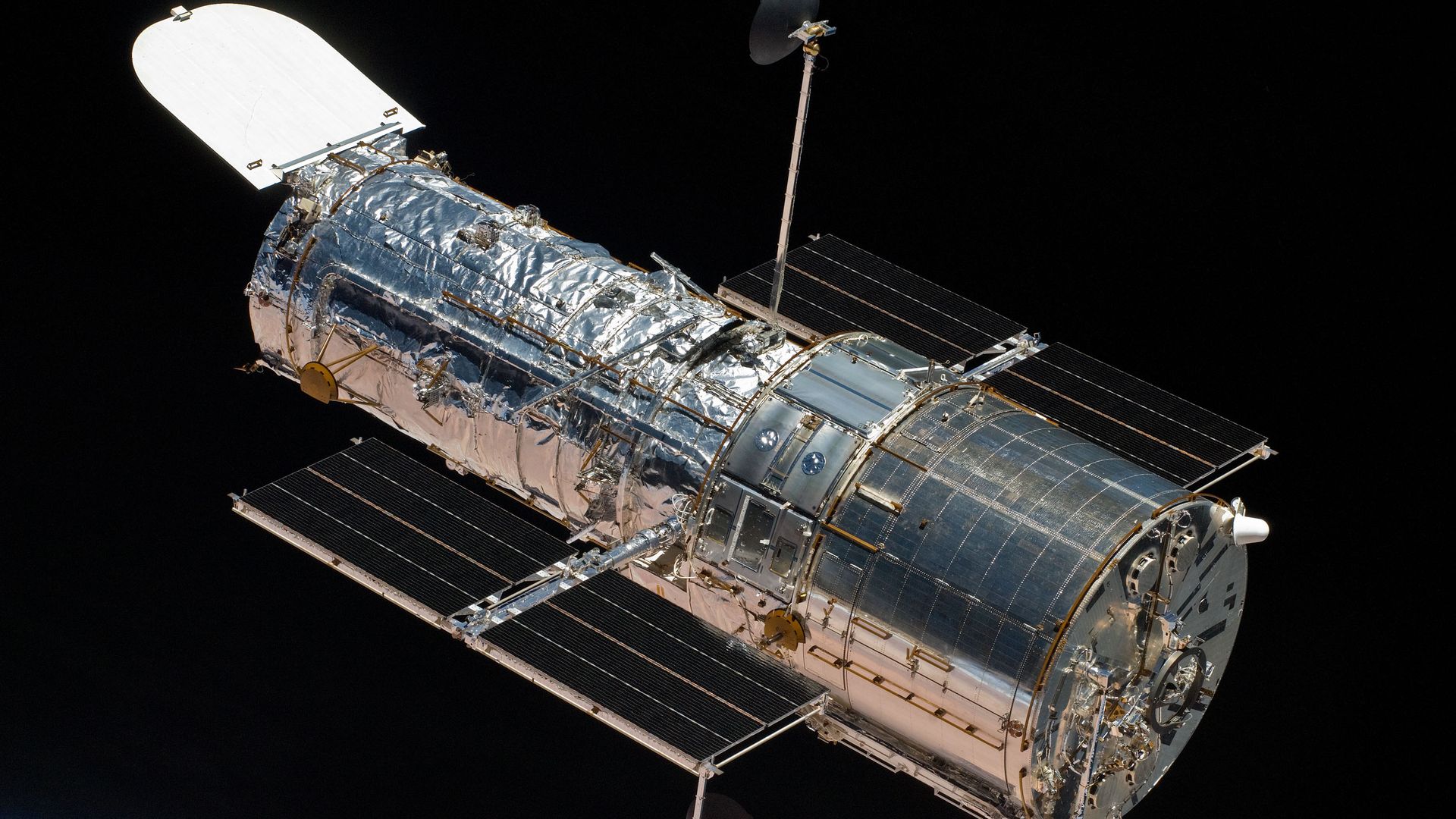| |
| |
| |
| |
| |
| Axios Space |
| By Miriam Kramer · Oct 04, 2022 |
| Thanks for reading Axios Space. At 1,227 words, this newsletter is about a 4½-minute read. - This week, Axios China reporter Bethany Allen-Ebrahimian and I look at the geopolitics of space. You can sign up for Bethany's excellent Axios China newsletter here.
🎧 Part two of our new season of "How it Happened" focusing on Elon Musk and Twitter just went live this morning. Listen to it and subscribe here. (I think you might recognize a few familiar voices.) Please send your tips, questions and geopolitical lines in the sand to miriam.kramer@axios.com, or if you received this as an email, just hit reply. |
| |
| |
| 1 big thing: Mapping China's space influence |
 Data: CSIS; Chart: Tory Lysik/Axios China has expanded its use of satellite ground stations in South America, leading multiple governments to express concern about Beijing's intentions, according to a new report, I write with Bethany. Why it matters: China's space program has close but opaque ties to the country's military, fueling concerns that ostensibly civilian facilities could also be used for intelligence collection and surveillance, according to the report. - NASA's relationship with the U.S. military, by contrast, is close but transparent and clearly delineated.
- "China's space network in South America is part of a broader push by Beijing to establish itself as a leading global space power and partner of choice in space for middle-income economies," the report released today by the Center for Strategic and International Studies states.
The big picture: Satellite ground stations allow nations and companies to communicate with their spacecraft, receiving information and sending commands to change positions or point in a specific direction. - The U.S., Russia and other nations operate ground stations and lease facilities in other countries.
- But the lack of information about China's intentions for its stations has some concerned about what they're being used for.
- Nations aim to scatter ground stations around the world — especially near the equator — because that leads to more robust satellite coverage.
- But the proximity of the South American facilities in particular "to the United States has heightened fears that they can be used to spy on U.S. assets and intercept sensitive information," the report says.
Details: Several Chinese ground stations on the continent have come under scrutiny, the report states. - Espacio Lejano, a ground station in Argentina, is operated by a Chinese company owned by the People's Liberation Army's Strategic Support Force.
- The Argentinian government agreed to "not interfere or interrupt" any activities the Chinese side carries out there, the report states.
Between the lines: Geopolitics has always been involved in ground station placement, use and control. - China shut down its ground station in Kiribati in 2003 after the Pacific island nation established relations with Taiwan, according to the Lowy Institute.
- China leases some facilities at the Santiago Satellite Station in Chile, which is operated by the Swedish Space Corporation. In 2019, the Swedish Defense Research Agency warned that China might be able to use its cooperation with the Swedish Space Corporation for military intelligence collection.
- The Swedish Space Corporation has since said it won't renew contracts with China because the "geopolitical situation has changed" since they were originally signed, Reuters reported in 2020.
The bottom line: Terrestrial geopolitics can be just as important as space technology amid U.S.-China space competition. Go deeper: China's long march to space superpower |
    |
| |
| |
| 2. Exclusive: New space junk tools |
 |
|
| Illustration: Annelise Capossela/Axios |
| |
| Privateer — a company focused on understanding and tracking space junk — is rolling out and updating tools to accurately visualize the orbital debris problem, the company's chief scientist tells Axios. Why it matters: Scientists think there are millions of pieces of space junk swirling above our planet speeding in excess of 17,000 mph and threatening functional satellites in orbit. - Tracking this junk and getting a sense for what it's all doing up there will allow mission managers to keep their spacecraft safe while also aiding in the fight against this looming environmental problem.
Driving the news: Privateer is updating its Wayfinder tool, which provides a near real-time, no-cost look at where satellites and space junk are at any given time. - The company is also rolling out Crow's Nest, a feature that will allow users to see and track possible close calls and collisions in space.
- Crow's Nest also lists the top 20 "highest probability collision events at any given moment" when someone goes on the website, according to Privateer's chief scientist Moriba Jah.
- These tools use publicly available data from NASA and other organizations as well as atmospheric and probabilistic models to create a publicly available, accurate map of what's happening in orbit.
The big picture: "We're very much trying to incentivize the creation of a circular space economy," Jah tells Axios. "How do we first and foremost focus on the prevention of more pollution in space?" - A "circular economy" in space would create incentives for companies to reduce their footprints in orbit by reusing and recycling satellites and rockets whenever possible and disposing of junk quickly and safely as needed.
- Jah hopes people who use Wayfinder will eventually be able to contribute their own data to the tool, acting as a "Waze traffic app, but for space."
What to watch: The company is also planning to roll out a new map showing the brightness of satellites that Jah hopes will be useful to astronomers planning observations. |
    |
| |
| |
| 3. Giving Hubble a boost |
 |
|
| The Hubble Space Telescope in 2009. Photo: NASA |
| |
| NASA and SpaceX are looking into what it would take to launch a privately funded mission to boost the Hubble Space Telescope to a higher orbit to extend its life. Why it matters: The partnership and others like it could save the government money and shore up the technical expertise that private companies need to make complex space missions work in the future. What's happening: SpaceX approached NASA about looking into the possible mission "a few months ago," NASA's Thomas Zurbuchen said during a press call last week. - The potential mission could fit under the auspices of the Polaris Program, three private missions through SpaceX and billionaire Jared Isaacman to test the company's technology, culminating in the first crewed flight of the company's next-generation Starship rocket.
- "Hubble is a national asset. It's really an honor for us if we would be able to extend its lifetime," Jessica Jensen, SpaceX vice president for customer operations and integration, said during the press call.
- It's possible this kind of orbital boost for the Hubble could squeeze 15–20 more productive years from the telescope, assuming nothing goes wrong with the spacecraft.
The big picture: Scientists have said the Hubble and James Webb Space Telescope operating at the same time will allow them to get more data than just having one of these powerful telescopes in space. Yes, but: There are still a lot of questions to answer before NASA decides whether to go forward with the mission. - Part of what SpaceX and NASA will focus on during the study is figuring out how much a mission like this will cost.
- It's not yet clear whether the mission itself will require a crew of astronauts or if an uncrewed spacecraft could boost the Hubble.
- There's also a possibility NASA will decide another company entirely — perhaps one developing specific satellite-servicing tools — will be a more appropriate partner for this type of mission.
|
    |
| |
| |
| A message from Axios |
| The latest political news in your inbox |
| |
 |
| |
| Stay in the know for the upcoming midterm elections with our insider's guide to the powerful people — and ideas — shaping politics. Delivered daily from Sunday to Thursday. Subscribe for Free |
| |
| |
| 4. Out of this world reading list |
 |
|
| Illustration: Aïda Amer/Axios |
| |
| ⚠️ Elon Musk's empire of risk (Erica Pandey, Axios) ☄️ Analysis of an asteroid sample reveals evidence of mini-ocean and carbonation (Jeff Nagle, Inverse) 🚀 Firefly's Alpha rocket launches successfully in second attempt (Loren Grush, Bloomberg) 🛰 India loses contact with Mars orbiter as spacecraft runs out of fuel (Robert Lea, Space.com) |
    |
| |
| |
| 5. Weekly dose of awe: Europa in relief |
 |
|
| Photo: NASA/JPL-Caltech/SWRI/MSSS |
| |
| Europa's pocked and cracked surface stands out in a new photo taken by the Juno spacecraft exploring Jupiter. - This is the first image taken right around the time of Juno's closest approach with Europa when it flew 219 miles from the moon's surface.
- "It's very early in the process, but by all indications Juno's flyby of Europa was a great success," Scott Bolton, Juno principal investigator, said in a statement.
|
    |
| |
| |
| A message from Axios |
| The latest political news in your inbox |
| |
 |
| |
| Stay in the know for the upcoming midterm elections with our insider's guide to the powerful people — and ideas — shaping politics. Delivered daily from Sunday to Thursday. Subscribe for Free |
| |
| Big thanks to Alison Snyder for editing and Sheryl Miller for copy editing, Bethany for writing with me, and to Tory Lysik, Aïda Amer and Annelise Capossela for the visuals. If this newsletter was forwarded to you, subscribe. 🛰 |
 | | Are you a fan of this email format? It's called Smart Brevity®. Over 300 orgs use it — in a tool called Axios HQ — to drive productivity with clearer workplace communications. | | |
No comments